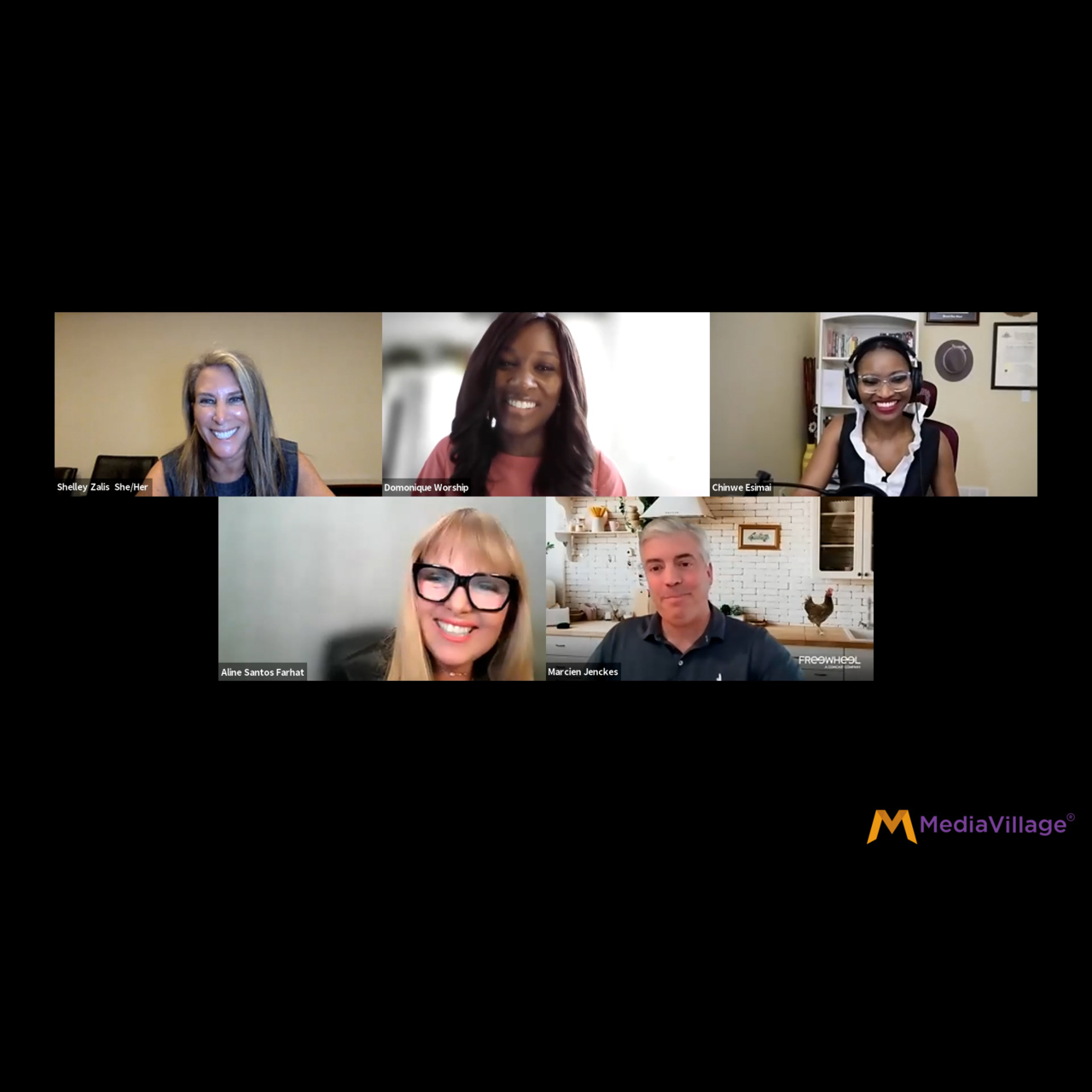Inclusivity Best Practices: ERTs, Interview Allies, Inreach, Library of Experiences

Workplace culture is a driving force behind employee retention and an individual's sense of belonging and purpose, which drives overall company growth. Leading the charge and validating that "doing good is good for business," a panel during MediaVillage's Advancing Diversity Week titled "Spotlight on Leaders Effectively Using Their Influence to Champion Inclusivity" highlighted industry leaders who are using their influence to champion inclusivity and foster cultures where employees feel empowered to not only speak up but bring about change. (You can watch the panel in its entirety in the video above.)
"At Unilever, we have a culture driven by purpose," shared Aline Santos, Chief Brand Officer and Chief Equity, Diversity & Inclusion Officer. "We say brands with purpose grow. Businesses with purpose last. People with purpose thrive." According to Santos, Unilever's culture has been a magnet for young talent. All employees are invited to participate in a purpose workshop where they are able to clarify what they want to do with their lives. With that insight, managers are better able to match employees with a job that makes sense for their passion and skill set. "When you align your purpose with your job, magic happens," Santos noted, adding that job satisfaction and motivation "have gone through the roof, bringing phenomenal results for the company."
At the NBA, seven ERTs (employee resource teams) play an integral role in belonging and community, explained Vice President of Diversity & Inclusion, Domonique Worship. "They consistently lead the charge in advocating for our employees. One example is community conversations piloted by 'Dream and Color,' our Black ERT. This group has recommended the need for a safe space for employees to come together and have meaningful dialogue about tough issues that weigh heavily on their hearts and minds ... things that aren't discussed in the day-to-day."
Shelley Zalis, CEO of The Female Quotient and moderator of the panel, noted that going from an ERG (employee resource group) to an ERT (team) is a very valuable nuance. "Language matters, especially when we're talking about this next generation and the impact," she said. Zalis brought up an important question: How do you unite affinity groups so that an employee solution doesn't create an unintended separation?
Chinwe Esimai, Managing Director and Chief Anti-Bribery & Corruption Officer at Citi, added, "Through a lot of collaboration ... we’re finding commonalities among the groups. During Black History Month, although the Black affinity group may lead, we incorporate themes from other groups. Diversity is not about one particular group."
"You have to have affinity groups, but to support this and make it work -- you have to have leaders who understand the importance of inclusion," Santos added.
Zalis agreed and said we need to have conscious leaders who know how to listen. "We are all in very different states of emotional and mental health," she cautioned. "Listening to hear with empathetic mindsets is important."
Esimai added that Jane Fraser, Citi's first female CEO, incorporated empathy into the company's core values and leadership principles. "In over 200 years of our existence, we hadn't highlighted empathy as a core value like we do now," she said. "Everyone wants to feel seen, heard and understood."
Marcien Jenckes, President of Advertising at Comcast Cable, focused on accountability, explaining that his company has built DEI objectives into executive bonuses as an added incentive. "And we have ERGs that we may now rename ERTS following Domonique's lead," he said. Jenckes also shared an interesting addition to the hiring process, what he called an "interview ally." This entails bringing people in from outside the direct reporting chain to check for unconscious bias, "to make sure we're not going for the quick easy hire, but the best hire." The interview ally then picks up the role as mentor for the chosen candidate once they are brought into the organization, providing ongoing support.
Santos offered a unique way for employees who don't work together regularly to engage with one another, in what she described as a "library of experiences."The library is a place where colleagues share unique skills (maybe woodwork or poetry writing, cooking or insights on their heritage) and anyone can book time with that person to learn more.This is something that companies can easily embrace and it's a fun and different way to foster inclusivity.
Zalis shared the concept of "proximity-ship," which is not about outreach, but "inreach." This is when a leader places open slots on their calendar and anyone in the organization can "inreach" and sign up for valuable one-on-one time they may never experience otherwise.
Jenckes' closing thoughts served as an important reminder for both employer and employee: "People think when they're being interviewed the decision is in someone else's hands. They're also interviewing the employer and need to look for a culture and company that stands for what they believe in."
Click the social buttons to share this content with your friends and colleagues.
The opinions and points of view expressed in this content are exclusively the views of the author and/or subject(s) and do not necessarily represent the views of MediaVillage.com/MyersBizNet, Inc. management or associated writers.


